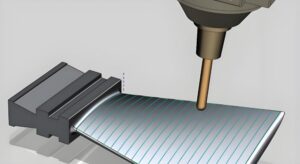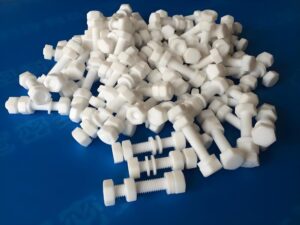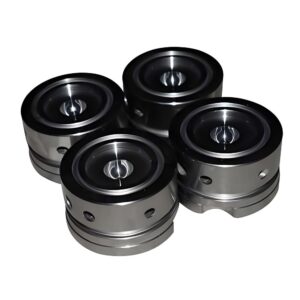In the world of modern machining, efficiency, precision, and flexibility are paramount. This is where hydraulic fixtures come into play, offering machining companies a reliable solution to hold workpieces during production. As the need for high-quality parts increases, hydraulic fixtures are increasingly seen as an essential tool in the machining industry. In this blog, we’ll explore the various aspects of hydraulic fixtures, including their working principle, components, design, manufacturing, and advantages. We’ll also delve into how they are particularly useful in the automotive industry.
Working Principle of Hydraulic Fixtures
Hydraulic fixtures are an essential component in the machining process, allowing for precise and stable clamping of workpieces. The basic working principle of a hydraulic fixture revolves around using hydraulic pressure to clamp the workpiece firmly in place, providing both flexibility and power.
The hydraulic fixture operates on the principle of pressure transmission through a fluid medium—hydraulic oil. A hydraulic pump delivers pressurized fluid into a cylinder, which then applies force to a piston or clamping element. This clamping force is then transferred to the workpiece, securing it for machining operations.
Hydraulic fixtures are designed to accommodate different clamping requirements based on the size, shape, and complexity of the workpiece. They can also be adjusted easily to accommodate varying part geometries, making them an ideal solution for high-precision tasks. Moreover, hydraulic systems offer the advantage of providing uniform clamping force across the workpiece, ensuring consistent machining results.
Main Components of Hydraulic Fixtures
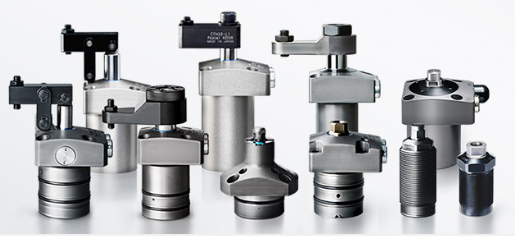
A hydraulic fixture consists of several key components that work in harmony to provide effective clamping. These components include:
1. Hydraulic Cylinder:
The hydraulic cylinder is the heart of any hydraulic fixture. It houses the piston that exerts the clamping force on the workpiece. The cylinder’s design can vary depending on the size and type of fixture, but its function remains the same: providing the necessary force to hold the workpiece securely.
2. Clamping Element:
This component, which can be a jaw, pad, or vice, makes direct contact with the workpiece and applies pressure to hold it in place. Clamping elements can be customized to suit the shape of the workpiece and are often designed to ensure uniform pressure distribution.
3. Hydraulic Pump:
The hydraulic pump generates the pressure that powers the hydraulic system. It’s the component responsible for pushing hydraulic fluid through the system and into the cylinder to create the necessary force.
4. Hydraulic Fluid:
Hydraulic fluid (usually oil) acts as the medium for pressure transmission. It travels through the hydraulic lines from the pump to the cylinder, transferring the energy required for clamping.
5. Pressure Relief Valve:
The pressure relief valve ensures the hydraulic system operates within safe limits. If the pressure exceeds a certain level, the valve opens to release excess fluid and protect the system from damage.
6. Hydraulic Lines:
Hydraulic lines are the channels through which the fluid is transported from the pump to the cylinder. These lines are designed to withstand high pressure and ensure the system operates efficiently.
Each of these components plays a crucial role in ensuring the fixture functions smoothly and efficiently, offering both power and precision during machining operations.
Design of Hydraulic Fixtures
Designing a hydraulic fixture requires a keen understanding of both the workpiece and the machining process. The primary objective is to create a fixture that can securely hold the workpiece while allowing for precise machining. When designing a hydraulic fixture, engineers must consider various factors:
1. Workpiece Geometry:
One of the most important considerations in fixture design is the shape and size of the workpiece. The fixture must be able to accommodate the part, regardless of its dimensions or complexity. Custom clamping elements are often designed to match the contours of the workpiece.
2. Clamping Force:
The amount of force required to securely hold the workpiece is another critical factor. The design of the hydraulic fixture must ensure that the clamping force is sufficient to prevent movement during machining but not so high as to distort the part.
3. Adjustability:
Flexibility is essential in hydraulic fixture design. The fixture should be easily adjustable to accommodate different workpieces without the need for a complete redesign. This is particularly important in industries like automotive manufacturing, where part designs can vary significantly.
4. Access to the Workpiece:
The design must also consider access to the workpiece for the machining process. Whether it’s turning, milling, or drilling, the fixture must allow for the tool to reach the necessary areas of the workpiece without interference.
5. Durability:
The materials used in the fixture design should be durable and resistant to wear and tear. The hydraulic system needs to operate in harsh environments, and the fixture components should be able to withstand the pressures and forces involved in machining operations.
By considering all of these factors, designers can create hydraulic fixtures that are both efficient and effective in the production environment.
Manufacturing of Hydraulic Fixtures
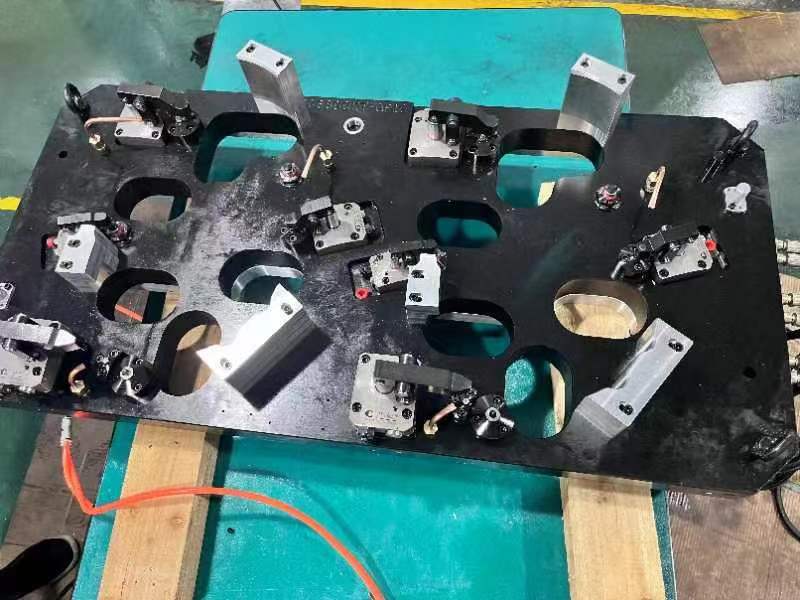
The manufacturing process of hydraulic fixtures involves several stages, each aimed at ensuring the fixture is of the highest quality and capable of performing under demanding conditions.
1. Material Selection:
The materials used in the manufacture of hydraulic fixtures must be strong, durable, and resistant to wear. Steel, cast iron, and aluminum alloys are commonly used due to their ability to withstand the high pressures associated with hydraulic systems.
2. Precision Machining:
Once the material has been selected, precision machining is used to create the individual components of the hydraulic fixture. This may include turning, milling, and grinding processes to ensure each part is manufactured to tight tolerances.
3. Assembly:
After the individual components are machined, they are assembled into the final fixture. This stage includes the installation of hydraulic cylinders, pressure valves, and clamping elements. The assembly process is critical to ensuring the fixture operates correctly and reliably.
4. Testing:
Before the hydraulic fixture is shipped to the customer, it undergoes rigorous testing to ensure it functions as expected. This includes pressure testing to verify that the hydraulic system operates without leaks and that the fixture can generate the necessary clamping force.
5. Quality Control:
Quality control is an ongoing process throughout the manufacturing of hydraulic fixtures. Each component is inspected for defects before and after assembly. Any issues discovered are rectified to ensure the fixture meets the highest standards of performance.
Selecting Brands of Hydraulic Fixture Components
Choosing the right brand for hydraulic fixture components is essential for the long-term performance and reliability of the system. Here are a few factors to consider when selecting components:
1. Reliability:
A good brand should be known for producing reliable, durable components that can withstand the pressures and stresses involved in machining operations. Look for manufacturers with a proven track record in the industry.
2. Compatibility:
The components should be compatible with each other and with your existing hydraulic system. Incompatible parts can cause inefficiencies or even damage the fixture.
3. Customer Support:
Good customer support is essential for resolving any issues that may arise during operation. Select a brand that offers excellent after-sales service and technical support.
4. Performance:
The components should provide consistent performance, ensuring that the fixture maintains its clamping force and precision throughout the machining process.
Advantages of Hydraulic Fixtures
Hydraulic fixtures offer numerous advantages over traditional mechanical clamping systems, making them an ideal choice for many machining operations:
1. Increased Clamping Force:
Hydraulic fixtures can generate a much higher clamping force than mechanical fixtures. This is particularly useful when working with large or heavy workpieces that require extra force to stay securely in place during machining.
2. Ease of Use:
Unlike manual clamping systems, hydraulic fixtures are much easier to operate. Once set up, the clamping process can be automated, reducing the need for manual intervention and increasing productivity.
3. Flexibility:
Hydraulic fixtures can be adjusted to fit a wide variety of workpieces. This flexibility makes them ideal for industries where part designs frequently change, such as automotive manufacturing.
4. Consistent Clamping:
Hydraulic systems provide a uniform clamping force across the workpiece, which ensures consistent results during machining. This is particularly important when working with high-precision parts.
5. Safety:
The use of hydraulic fixtures reduces the need for manual clamping and re-clamping, which can be dangerous in high-pressure environments. Additionally, hydraulic fixtures often include safety features like pressure relief valves to prevent system failures.
Applications of Hydraulic Fixtures in Automotive Parts
The automotive industry relies heavily on hydraulic fixtures to ensure the production of high-quality parts. Hydraulic fixtures are used in a wide range of machining operations, from turning and milling to drilling and grinding. They are particularly useful when working with complex or large parts that require high precision, such as engine components, transmission parts, and chassis elements.
One of the key advantages of hydraulic fixtures in automotive part production is their ability to handle a wide range of part sizes and shapes. Automotive components often require custom fixtures to accommodate their unique geometries. Hydraulic fixtures can be easily adjusted to fit different workpieces, making them ideal for high-mix, low-volume production runs.
Furthermore, the consistent clamping force provided by hydraulic fixtures ensures that automotive parts are machined with high precision, meeting the stringent tolerances required for modern vehicles. This makes hydraulic fixtures an indispensable tool in the automotive manufacturing process.
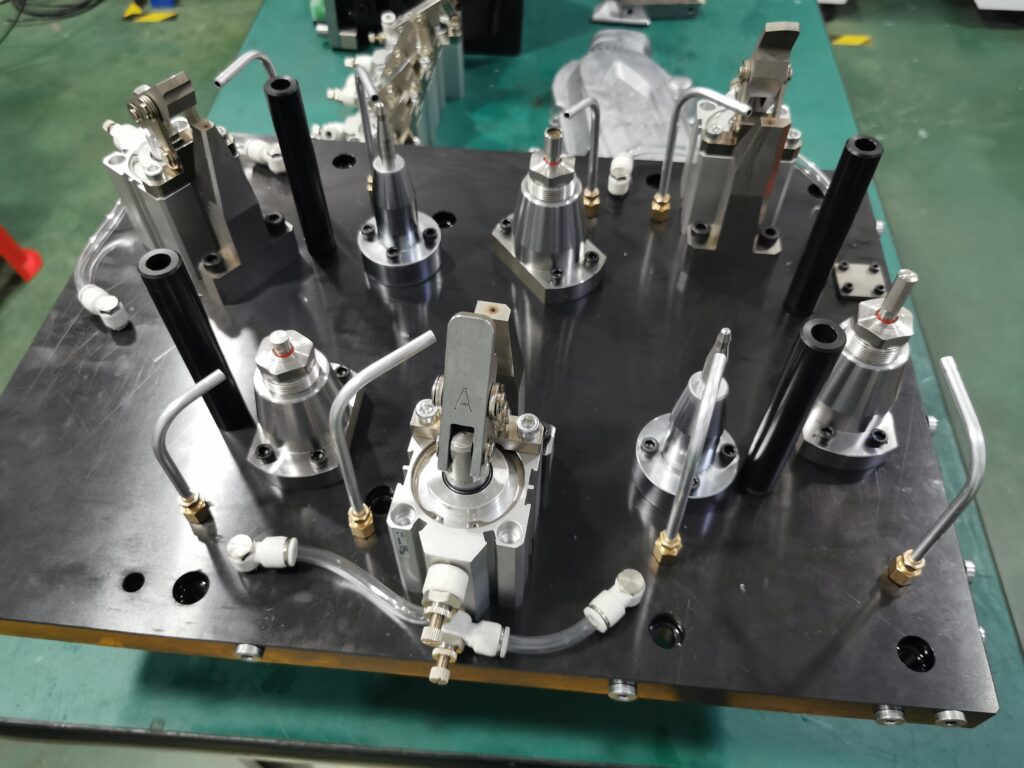
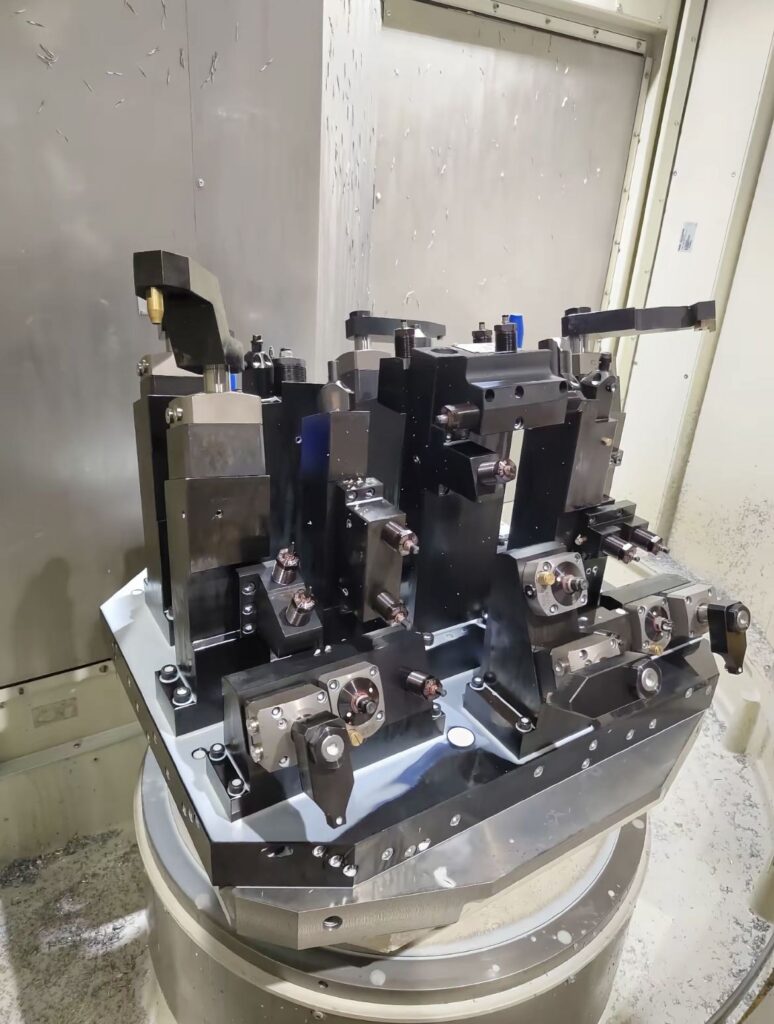
Conclusion: Precision at Its Best with Precionn Hydraulic Fixtures
In conclusion, hydraulic fixtures offer significant advantages in terms of precision, flexibility, and efficiency. Their design and functionality make them essential in modern machining, especially in industries like automotive manufacturing, where precision is key. Precionn has more than 20 years of experience in the design and manufacturing of hydraulic fixtures. Whether in the traditional automotive industry or the electric vehicle industry, Precionn can provide customized services for hydraulic fixtures.

